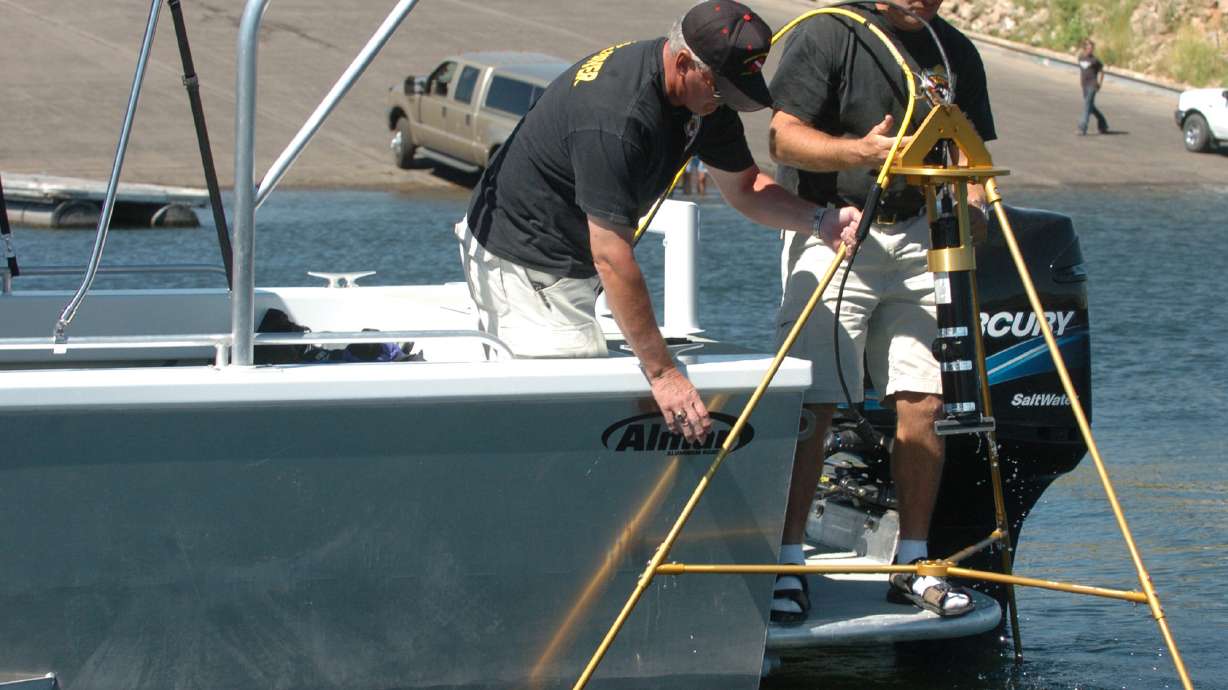Estimated read time: 4-5 minutes
This archived news story is available only for your personal, non-commercial use. Information in the story may be outdated or superseded by additional information. Reading or replaying the story in its archived form does not constitute a republication of the story.
SALT LAKE CITY — The sun may be scorching, but the lake's still cold.
It doesn't take long even for confident swimmers in Utah's reservoirs to succumb to the effects of chilly water, which can cause shock, cramped muscles and difficulty breathing. After five people drowned in a little over a week in the Beehive State, officials are reminding the public of simple steps they can take to save their lives and others while out on the water.
Ty Hunter, state boating program coordinator, said he often hears after a tragedy that the deceased was a good swimmer. But staying afloat in open water is much different than in a pool or even in the ocean.
"I look at it and go, 'Dang it, if you just would have worn your life jacket.' That's the biggest thing," Hunter said. "It is so simplistic of a thing you can do, but people are so resistant to doing so."
While weather has played a role in some deaths, he added, most occur in daylight and in good conditions. Many of those who perish either took a dip to relieve themselves or went for a swim and somehow got separated from the boat. Sometimes, a loved one jumps in and saves them but ends up drowning in the rescue.
An Arizona couple, Catherine McMillan, 59, and David McMillan, 72, drowned last weekend at Deer Creek Reservoir after she and another family member were swimming began to struggle, and he jumped in to help.
A few days prior to that, 17-year-old Fernando Botello Arredondo drowned at the same reservoir last week after family members said he suddenly went under the water and did not resurface in an area that was 4 feet to 8 feet deep.
At northern Utah's Pineview Reservoir last weekend, a 37-year-old father disappeared as he swam in the Middle Inlet section of the reservoir trying to reach his son, who was on some sort of flotation device.
And on Friday night, Weston Lane Peterson, a 19-year-old man from Sanpete County, drowned in Utah County's Spring Lake while swimming with friends.
None of these drowning victims was wearing a life jacket, authorities confirmed.
The pandemic has ushered in a new set of boat, jet ski and paddle enthusiasts since spring of last year, with 2.6 million new visitors in 2020 — one-third more than in the year prior.
Hunter is worried the more novice group isn't receiving the state's messages about water safety: Namely, wear a life jacket in case you fall and certainly never jump in without it.
Related:
Drownings have caused four deaths at state parks so far this year, compared to nine in 2020, 11 in 2019 and 10 in 2018, according to the Utah Division of State Parks and Recreation.
But the numbers don't give a complete picture. The division doesn't track drownings in federally managed lakes like Pineview or those that aren't related to boats. Nor does it keep records of deaths that occur when a boat is anything but free floating — whether it's moored, anchored or docked.
Utah requires teenagers to complete an online safety lesson before they can operate a personal watercraft like a jet ski. But there's no such requirement for adults.
Tips from Hunter and the Utah Division of State Parks and Recreation:
- Make sure your life jacket has a tag indicating it meets standards for buoyancy approved by the U.S. Coast Guard.
- If someone needs help in the water, first try to extend an oar and pull them in, then toss a life jacket or something else that floats. Row closer, but don't start the motor, and if that doesn't work, go for help. Avoid jumping in the water, especially without a life jacket.
- The night before you go, take some time to refresh your memory with brief safety courses you access on the state's website.
Wearing a life jacket is just like wearing a seat belt in the car, said Utah parks spokesman Devan Chavez.
"There's really no excuse not to be wearing them anymore," he said.
Utah recorded 41 drownings in 2019, the highest in a decade, according to data provided by the Utah Department of Health. The previous record was 38, which occurred in both 2016 and 2011.
The agency didn't provide details on how many occurred in open water as opposed to pools, tubs or other places.











